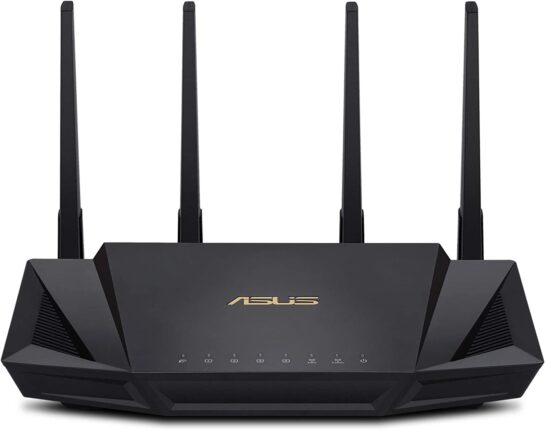
Whether you’re a store with just one computer, or a store with 15 computers + network printers, we’ve implemented and recommend the following Internet and network setup for consignment/resale stores…
- Cable or fiber Internet Service Provider (ISP) — e.g. Spectrum, Comcast, Cox, etc.
- A modem-only device that you own (when applicable).
- A router you own.
Benefits
The most common Internet and network issues stores come to us for, are unstable/unreliable Internet and unstable/unreliable network connections in their store — both wired and wireless. We’ve been writing about the problems using ISP-provided all-in-ones cause for years and while it’s one of the most common and important issues stores face, it’s also one of the easiest and least expensive to change.
The key benefits of utilizing a cable ISP and your own modem, as well as your own router are:
- Not having to power-off/-on the modem on a regular basis, specifically after local outages, storms, etc.
- Reliable and consistent Internet throughput (a.k.a. speed).
- Reliable and consistent network communication between your computers, phones, tablets, etc.
- Reliable, fast, and far-reaching WiFi without ‘range extenders’.
Cost
This is one of the most inexpensive and effective changes/setups you can do for your store. To summarize costs:
- $50-$100/mo for most business Internet service plans from the providers mentioned in this post.
- $150 for the modem -> https://www.amazon.com/dp/B07DY16W2Z/
- $150 for the router -> https://www.amazon.com/dp/B084BNH26P/
Monthly plans can fluctuate and each ISP’s sales department can try to pitch/offer different plans. A 100 Mbps down/10 Mbps up plan is more than enough for most any store out there, so keep that in mind when considering additional costs/features @ television service, phone service, etc.
Time
Other than ordering the modem and router, this is a relatively quick and easy process. For Comcast customers, this is a very easy process. Comcast Business makes the process of using your own modem very easy. This is a process we do for Peeps’ customers, but it’s simple — call Comcast to let them know you’d like to activate a new, compatible modem that you own. After providing them with the Serial # and MAC Address, Comcast will activate the device on your account and you’ll connect the modem to your existing coaxial cable. Modems are typically activated within minutes and the whole process top to bottom, typically takes well under an hour.
After the modem is online, connecting and configuring the Asus router is next. It’s a very easy initial setup process @ accessing router.asus.com from your computer and following the on-screen prompts to automatically detect your ISP’s connection, specify your router’s admin password, and set your WiFi SSID/name. After that, we do have a checklist of additional settings we like to configure for Asus routers, including but not limited to:
- Enabling the Guest WiFi network, which all employees, customers, and visitors will use for their personal devices.
- Disabling UPnP (security risk).
- Enabling DDoS Protection.
- Enabling DHCP Assignment/Management.
- ‘Locking’ the server PC’s IP address via DHCP Assignment.
- Enabling the AI Protection system.
- Opening and forwarding Ports, as needed.
- Configuring dynamic DNS, as needed.
All in all, when all is said and done, the time to unbox, connect, and activate/configure these devices is very quick. The return on investment from this though, is massive. What it buys your store is:
- The peace of mind of knowing your Internet is not dropping/having issues, do to your modem or router — a common problem with ISP-provided equipment.
- The ability to tell your consignment software vendor that any network throughput or stability issues, are not being caused by your router — a common problem with certain ISP-provided all-in-ones.
- The peace of mind of knowing WiFi just works and works virtually anywhere in your store.
- Three+ less things to worry about in the grand scheme of things you have to deal with when owning/running a consignment/resale store.
Some additional items/equipment that comes up in larger/divided stores:
- Netgear ProSafe Network Switches (provides additional ports/connections for stores with more than four computers, or stores that have ‘split plans’ with computers in different parts of the store) -> https://www.amazon.com/dp/B00MPVR50A/
- Reliable network cables -> https://www.amazon.com/dp/B00BEFY2QI/
- For stores with thick, brick walls or rooms/areas with weaker WiFi, easily add more Asus routers to create a MESH WiFi network.
This is the setup we recommend and shoot to implement for all new stores and as many existing stores as possible. Once done, it’s easily one of the most effective changes we’ve seen for stores and running systems and software on said network, is such a lovely experience. 🙂

